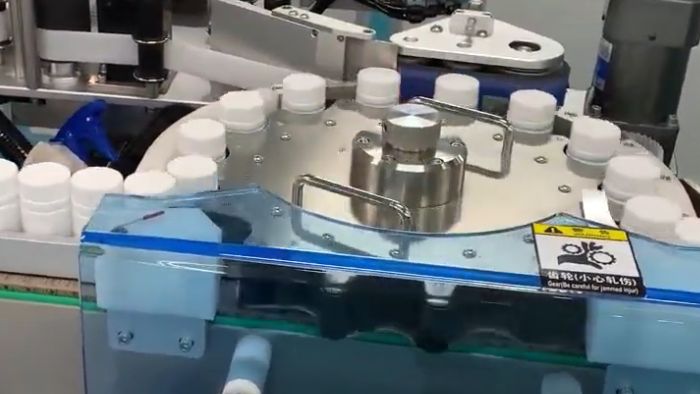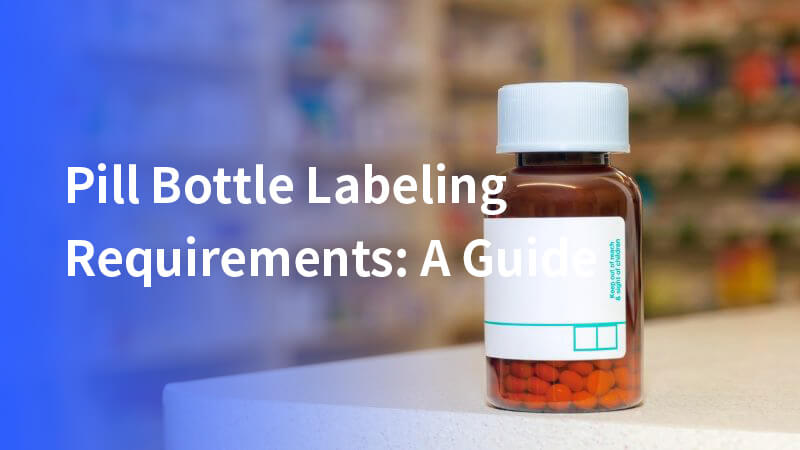Pill bottle labeling requirements is very important to make sure people take the right medicine. Clear and right labels on pill bottles help prevent mistakes that could make people sick.
In this guide, we will talk about what makes a good pill bottle label.
Label materials and types
- Label materials: Pill bottle labels are usually made of paper or clear plastic. Paper labels are easy to read but can get damaged. Clear plastic labels are stronger and can last longer.
- Label types: There are different kinds of labels for pill bottles. Including wrap-around labels, partial labels, and tamper-evident seals. These labels can fit the bottle’s surface and withstand various environmental conditions.

Technical parameters of labeling machines for prescription medications
- Applicable bottle diameter: Our machines can handle bottles of different sizes, just like the ones you find in drugstores.
- Labeling speed: They can put labels on many bottles in a minute, and they work really fast.
- Labeling accuracy: The labels are always put on in the right spot, so they are easy to read.
- Label dimensions: The labels are the perfect size for the bottles, so all the information is clear.
Our pill bottle labeling solutions are perfect for your needs.

The requirements in label design and printing
- Label content: Every medicine bottle label should tell you what the medicine is, how much to take, and when it was made. It also has a special number called a batch number to keep track of the medicine.
- Generic name: The label also tells you the medicine’s basic name, no matter what brand it is.
- Medication name: The medicine’s name, how much to take, and how to take it are all clearly written on the label.
- Label layout: The words on the label are easy to read.
- Printing quality: The words on the label are printed very well so they don’t smudge or fade.
Environmental requirements for label application on medication bottles
- Storage conditions: Labels need to be kept in a place that’s not too hot or too cold, and not too wet or too dry.
- Application environment: When we put labels on bottles, the room should be a good temperature and not too humid. This helps the labels stick properly.
Labeling devices and process
- Equipment selection: When choosing a labeling machine, we need to think about how many bottles we need to label and what kind of medicine we make. If you want to have few production, you can choose manual one. If not, the automatic one is the best choice for you.
- Labeling process workflow: To label a bottle, we put a label in the machine, put the bottle in the right place, stick the label on, and check if it’s done right.
- Equipment maintenance: We need to take care of the machine by cleaning it and checking it often.
Quality control and inspection
- Quality standards: Medicine labels have to be perfect. They need to stick well and be in the right spot. The words must be clear so that no one makes a mistake.
- Package insert: There’s a package insert that comes with the medicine that tells you everything you need to know about it. Including side effects, precautions, and additional guidelines. This is important for workers in medical area.
- Inspection methods: We check the labels to make sure they are stuck on well and are in the right place.
- Issue resolution: If there is a problem with a label, like label detachment, fix it quickly.
FDA Regulations and standards
- International and national standards: Pharma companies must follow rules like FDA guidelines and GMP. The FDA checks to make sure all the important details are included on labels.
- Prescribing information: It’s important for medicine labels to have clear prescribing information. These inserts are for doctors and healthcare workers, but patients may not understand them easily. The information can also change depending on the state, so communication must be clear.
- Industry guidelines: Industry labeling rules help keep the pharmaceutical world safe. Prescription medicines are important in healthcare, and groups can help make these medicines affordable for people who need them. Prescription labels, unlike over-the-counter ones, can have more detailed information and may be harder to understand.

Conclusion
Pill bottle labeling requirements are needed to keep medicines safe and easy to identify. These rules help companies make sure that medicines are safe for patients.
Proper labeling keeps patients safe and helps with managing the supply chain of medicines. It also helps companies follow industry standards and laws.
As technology changes and new rules come up, pill bottle labeling will improve to keep medicines even safer.







